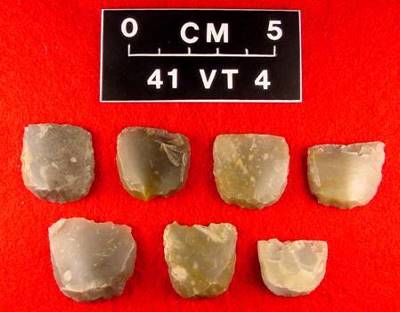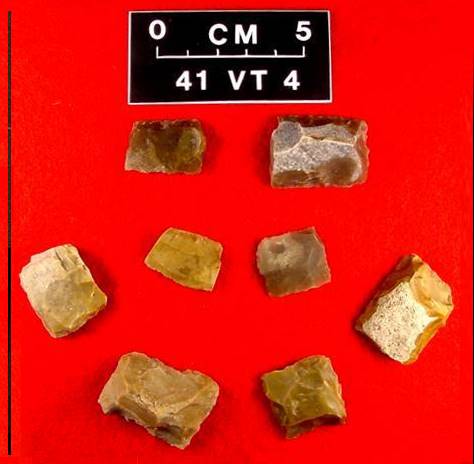

Gunflints of the French (left) and Spanish (right). These chipped stones were part of the firing mechanism of muskets and pistols. Placed in the cock of a firearm, the flints would strike a metal arm, producing a spark to ignite the gunpowder. Gunflints were mass produced in France and England until the late 18th century. Analyst Jeff Durst notes that in French firearms, the flintlock mechanism was more refined and required a higher quality flint to make it work. The French specimens shown above are blade-type gunflints in a fairly uniform shape; they were manufactured from a blonde, or “honey colored,” translucent flint. Other specimens are spall type and were made of gray to nearly black flint. The French gunflints likely were brought over from France by the colonists. Spanish gunflints, such as those shown at right, were more crudely made and irregular in shape. Spanish flintlock guns had rugged firing mechnisms which allowed for considerable variation in size and shape of gunflints. In excavations at Fort St. Louis, a large amount of stone chipping debris was recovered from inside the presidio area. Durst believes much of this debris may derive from production of gunflints at the site using local stone. Some also may have been made by local Indians and traded to the Spanish. Photos courtesy of THC.